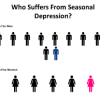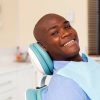- Empty cart.
- Continue Shopping
Understanding the Risks of Testosterone Replacement Therapy

Testosterone is a hormone that plays a crucial role in various aspects of men’s health, including muscle mass, bone density, mood, and sexual function. Testosterone levels naturally decline with age, leading some men to consider testosterone replacement therapy (TRT) to address symptoms of low testosterone. While TRT can provide benefits, it’s essential to understand the potential risks associated with this treatment.
1. Cardiovascular Risks
Heart health is a significant concern when it comes to TRT. Some studies have suggested a potential link between TRT and an increased risk of cardiovascular events, such as heart attacks and strokes. However, the evidence is not conclusive, and more research is needed to establish a clear connection.
2. Blood Clot Formation
Testosterone replacement therapy may increase the risk of blood clot formation (venous thromboembolism). Blood clots can be dangerous if they travel to vital organs like the lungs (pulmonary embolism) or brain (stroke).
3. Prostate Health
There is ongoing debate and research regarding the impact of TRT on prostate health. Some studies have raised concerns that TRT may promote the growth of existing prostate cancer or increase the risk of developing it. As a precaution, men considering TRT should undergo thorough prostate screenings and discuss the potential risks with their healthcare provider.
4. Sleep Apnea
TRT can contribute to or worsen sleep apnea, a condition characterized by interrupted breathing during sleep. Sleep apnea can lead to various health problems, including cardiovascular issues and daytime fatigue.
5. Mood Changes
While TRT is often prescribed to address mood changes associated with low testosterone, it can, in some cases, cause mood swings, irritability, or even mood disorders such as depression or anxiety.
6. Infertility
TRT can suppress sperm production, potentially leading to infertility. Men concerned about fertility should discuss this with their healthcare provider and explore alternative treatments.
7. Skin Reactions
One common method of TRT is through topical gels or creams. However, these products can sometimes cause skin irritation or allergic reactions at the application site.
8. Testicle Shrinkage
TRT can lead to a reduction in testicle size due to the suppression of natural testosterone production. This side effect is usually reversible when TRT is discontinued.
9. Polycythemia
TRT may stimulate the production of red blood cells, leading to a condition called polycythemia. Polycythemia can increase the risk of blood clots and cardiovascular events.
10. Breast Enlargement
Some men on TRT may experience breast enlargement (gynecomastia) as a side effect due to the conversion of testosterone into estrogen.
In Conclusion, Testosterone replacement therapy can provide significant benefits for men with clinically diagnosed low testosterone levels and associated symptoms. However, it is essential to understand and weigh the potential risks before starting TRT. Men considering TRT should have a thorough evaluation by a healthcare provider who specializes in hormone therapy. It’s crucial to discuss individual health history, risks, and potential benefits, as well as alternative treatments and monitoring plans. Regular follow-up appointments and ongoing communication with a healthcare provider are essential to ensure the safe and effective use of TRT. Ultimately, the decision to undergo TRT should be made in consultation with a qualified healthcare professional based on individual needs and circumstances.








